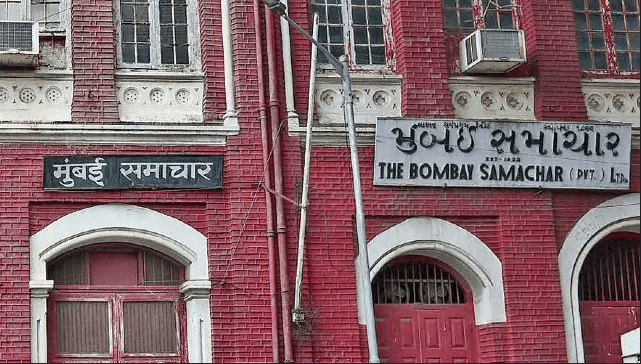Modi launches stamp for 200th anniversary of Mumbai Samachar: Look back at history of Asia’s longest-running newspaper
The Gujarati newspaper was first published in 1822 as a weekly by Parsi scholar Fardunjee Marzban. Over the last 200 years, Mumbai Samachar has survived the test of time and stayed true to its apolitical editorial policies
Article in First Post
Mumbai Samachar is Asia’s longest running newspaper. PTI
Prime Minister Narendra Modi on Tuesday released a special postal stamp commemorating the 200th anniversary of Mumbai Samachar, Asia’s oldest running newspaper.
The prime minister participated in ‘Dwishatabdi Mahotsav’ of Mumbai Samachar. Speaking at the event, he hailed the iconic Gujarati daily for giving voice to the freedom movement.
“Mumbai Samachar also gave voice to the freedom movement and then also took 75 years of independent India to readers of all ages. The medium of language remained Gujarati, but the concern was national,” he said.
He said that despite the influence of foreigners, the newspaper did not leave its local connect.
“Under the influence of foreigners, when this city became Bombay, even then this newspaper did not leave its local connect, did not break its connection with its roots. It was a normal Mumbaikar’s newspaper even then and it is the same today – Mumbai Samachar.”
The Prime Minister recalled that when the Mumbai Samachar started, the darkness of slavery was getting deeper. It was not so easy to get a newspaper in an Indian language like Gujarati in that period. Mumbai Samachar expanded linguistic journalism in that era.
The 200-years-old newspaper from Mumbai
The Gujarati newspaper was first published in 1822 as a weekly by Parsi scholar Fardunjee Marzban.
According to The Indian Express, Marzban had experimented with various publishing options before finalising this successful print run.
Its office is located in an iconic red building at Horniman Circle in Mumbai’s Fort area.
Mumbai Samachar’s director Hormusji Cama says that 20 years ago the newspaper conducted research and found that it is the oldest surviving publication in India and the fourth oldest in the world.
Bombay Samachar (as it was called then) started primarily to inform the readers about ship movements and commodities, and gradually evolved into a true city newspaper with a focus on trade that it is today.
Marzban started the publication four years after the Bengali newspaper Samachar Darpan was launched, to become the second non-English newspaper published in India. Then named Moombina Samachar, it was a weekly for the first 10 years, then a bi-weekly and has been a daily newspaper since 1855.
The paper exchanged several hands before the Cama family took over in 1933.
Cama Norton and Co. was a supplier of newsprint and ink to Mumbai Samachar, then owned by the Belgaumwala family. The Camas had approached the court against non-payment of arrears by Belgaumwalas and sought liquidation proceedings. The court instead asked Camas to take over the newspaper and salvage it, citing the livelihoods of employees that would be lost if the paper were to shut down. The Camas agreed.
Since then the publication has steadily grown and today it boasts of the most advanced technologies available in the field of publishing.
Cama, its present director and a passionate vintage car collector, insists that placing the reader in the centre is the key to the newspaper’s success.
Editorial policies
According to a report by the PTI news agency, the Cama family believes in giving complete freedom to the editors. Cama desists from speaking on editorial strategies, directing queries on such matters to the editors.
The newspaper has never been sensationalist in its coverage, Cama says, ruing the tendency among some journalists to “embellish” news stories for grabbing attention.
Despite the Gujarati readership, which tends to favour the current government, the paper’s editorials are critical of some government policies as well, he says.
Cama says Mumbai Samachar has never sold space to quacks or those making dubious claims like curing COVID-19, as the paper has kept the space devoted to ads within 20 per cent.
Surviving the pandemic
A variety of factors led the newspaper to increase its cover price to Rs 10 per copy in the middle of the coronavirus pandemic.
Even with the fall in circulation, the newspaper is among the few which delivered profits in the fiscal year 2020-21, Cama said.
To limit the impact of the coronavirus pandemic, Mumbai Samachar increased the cover price by Rs 2, reduced the number of pages and imposed cost control measures like a salary cut for senior management and no emoluments at all for those at the top to ensure that the business thrives, Cama said.
He added that not a single staffer of the “family” of 150 people was retrenched.

